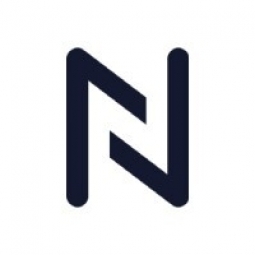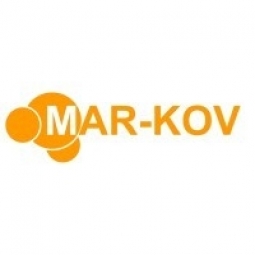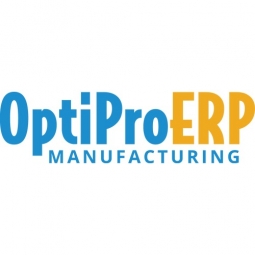Case Studies.
Add Case Study
Our Case Study database tracks 22,657 case studies in the global enterprise technology ecosystem.
Filters allow you to explore case studies quickly and efficiently.
Download Excel
Filters
-
(6,653)
- (2,601)
- (2,127)
- (945)
- View all
-
(5,642)
- (2,469)
- (1,692)
- (826)
- View all
-
(5,571)
- (2,178)
- (1,766)
- (643)
- View all
-
(5,247)
- (2,179)
- (1,715)
- (1,321)
- View all
-
(2,881)
- (1,448)
- (574)
- (376)
- View all
- View all 15 Technologies
- (1,985)
- (1,985)
- (1,915)
- (1,679)
- (1,629)
- View all 42 Industries
- (8,728)
- (4,742)
- (3,618)
- (3,233)
- (2,947)
- View all 13 Functional Areas
- (3,304)
- (2,787)
- (2,603)
- (2,006)
- (1,630)
- View all 129 Use Cases
- (13,581)
- (5,296)
- (4,272)
- (3,520)
- (2,856)
- View all 9 Services
- (504)
- (432)
- (416)
- (382)
- (301)
- View all 1083 Suppliers
Selected Filters

|
Nomad's Journey: From Kickstarter to Global Brand with Skubana
Nomad Goods, a company that started as a Kickstarter project in 2012, had grown significantly over the years, expanding their product line and business strategy. By 2018, they offered over thirty products and distributed through retailers such as Best Buy, Urban Outfitters, and Staples. However, with the expansion of sales, product line, warehouses, and sales channels, inventory management became a major challenge. The lack of a single source of truth for their inventory led to daily miscommunications and dissatisfaction from customers. Operational alignment meetings often took precedence over discussions about new product launches and promotional plans. Nomad’s Co-Founder & COO, Brian Hahn, spent most of his day over spreadsheets, estimating inventory in transit, at their 3PL, and in their internal warehouse. This process involved logging into multiple platforms, exporting data, and analyzing it in Excel.
|
|
|

|
Aaron Alter: Accelerating Music Composition with Sibelius
Aaron Alter, a composer and technical consultant, faced the challenge of creating music for modern performances and recordings while maintaining his full-time career. He needed to establish a creative presence in the music industry, despite having limited time due to his demanding consulting job. The traditional method of composing music, which involved writing everything by hand, was time-consuming and inefficient. This made it difficult for him to expand his second career as a composer and produce new music regularly.
|
|
|

|
Airbag: Harnessing Pro Tools for High-Quality Music Production
Airbag, a band from Argentina, faced the challenge of recording and producing music that captures high-quality audio while being flexible and easy to use. With a busy live concert schedule and global ambitions, the band needed a tool that could capture their sound in both live and studio settings, edit and mix their tracks, apply effects and MIDI instruments, and quickly publish songs online for their rapidly growing fan base. The band's bassist, Gastón Sardelli, was largely responsible for their recording sessions, editing and mixing, and developing a sound that was unique and personal. The challenge was to find a tool that was intuitive for a musician and could capture a very clean sound.
|
|
|

|
WeGo: Transforming Public Transit in Gainesville/Hall County, Georgia
Gainesville, Georgia, located in the foothills of the Blue Ridge Mountains, is a region where public transit is essential yet inconvenient. The area's bus stops are not centrally located, leading to long walks and low ridership. This situation is particularly challenging for residents who are not as mobile due to age or physical ability. Furthermore, a significant number of residents do not own a vehicle, making them heavily reliant on public transit. The existing fixed routes were underperforming, and the lack of a modern, convenient system was a significant issue for the community.
|
|
|

|
AI-Powered Solutions by CureMetrix: Enhancing Radiology Efficiency and Accuracy
The COVID-19 pandemic has resulted in a massive backlog of X-rays for radiologists to sift through, due to the closure of non-essential businesses and people staying at home. The traditional detection system for radiologists relied heavily on their own eyes, which could lead to human error. This situation posed a significant challenge in terms of time efficiency and accuracy in the detection and classification of anomalies in mammography. The need for a solution that could help radiologists improve the accuracy of their work, support better clinical decision-making, and improve financial outcomes for hospitals and clinics was evident.
|
|
|

|
Ender Diagnostics' Transition to a Cloud-Based Quality Management System with Qualio
Ender Diagnostics, a Swiss developer and manufacturer of rapid molecular diagnostic kits for the detection of SARS-CoV-2, faced a significant challenge with its quality management system (QMS). Founded in 2020, the company expanded rapidly due to the high demand for COVID-19 testing. However, Ender's manual, paper-based QMS was unable to keep up with this growth. It lacked audit-ready traceability and control and did not support remote and home working. The majority of Ender's workforce consisted of scientists and graduates, with only small pockets of specific quality management experience. The company needed a system that would not distract from scientific work with time-consuming administrative tasks. The challenge was to implement a document and training management system that could handle the company's rapid expansion and remote working needs.
|
|
|

|
Enhancing Patient Engagement with Patient Hub: A Digital Portal Case Study
The healthcare sector is often burdened with administrative tasks that can limit the capacity of staff and resources. Traditional methods of patient engagement, such as appointment notifications and waiting list validations, can be time-consuming and inefficient. Additionally, the reliance on physical mail for appointment letters can lead to delays and lost information. The challenge was to find a solution that could reduce the administrative burden on staff, increase capacity, and improve patient engagement, while also integrating seamlessly with existing healthcare systems.
|
|
|

|
Yource's Digital Transformation Journey with WaveMaker
Yource, a leader in customer contact and business process outsourcing, was on a path of complete digital transformation. The company was looking for a development platform that could provide a secure environment and enable faster development time to build applications for its internal processes. As a technology-first company, Yource had been a low-code user and a WaveMaker client since 2019, successfully implementing critical internal applications with low-code. However, the company needed a solution that offered flexibility in terms of customizing code, and the ability to deliver simple to complex applications quickly. This was crucial to give developers sufficient freedom and space within the tool to get the best of both worlds.
|
|
|

|
Coinpaprika Enhances Cryptocurrency Data Aggregation with ClickHouse
Coinpaprika, a leading cryptocurrency market data platform, was facing challenges with their existing data management system. They were using InfluxDB for their time-series data and MySQL for transactional data. However, as their data volume grew, they encountered several issues with InfluxDB. The team found it difficult to extract useful metrics from the system, and extending the timeframe for queries often led to server overload. They also experienced problems with response times due to merging data blocks. The open-source version of InfluxDB lacked built-in replication and scalability, which were critical for Coinpaprika's infrastructure. Coinpaprika needed a solution that could handle their increasing data volume, provide useful metrics, and offer improved performance and scalability.
|
|
|

|
ClickHouse: The Backbone of Dassana's Security Data Lake
Modern enterprises are investing heavily in security products due to the increasing cyber risks and their impact on businesses. A typical large enterprise today uses more than a dozen security technologies, which emit data in various shapes and sizes, making it difficult to make sense of the data. Security Information and Event Management (SIEM) systems, designed for immutable time series event data, struggle with the mutable nature of security data. For instance, the state of an alert could change from 'open' to 'closed', and SIEMs cannot update this change. The solution is to re-insert the updated data and query the most recent data, which is challenging on append-only systems like SIEMs. Additionally, SIEM companies have stopped innovating and investing in solving basic problems such as data normalization. Dassana, a security data lake, aims to address these challenges.
|
|
|

|
DeepL’s Transformation Journey with ClickHouse: A Case Study
DeepL, a language translation service, was looking to enhance its analytics capabilities in a privacy-friendly manner in 2020. The company wanted to self-host a solution that could handle large amounts of data and provide quick query times. They evaluated several options, including the Hadoop world, but found it too maintenance-intensive and time-consuming to set up. DeepL also wanted to automate the process of changing table schemas when frontend developers created new events, which would have otherwise overwhelmed the team. The company needed a system that could handle complex events and queries to understand user interactions, something that traditional tools like Google Analytics couldn't provide. Additionally, DeepL wanted to maintain full control over the data while keeping user privacy in mind.
|
|
|

|
DENIC Enhances Query Times by 10x Leveraging ClickHouse
DENIC eG, the administrator and operator of the German namespace on the Internet, was facing challenges in improving the user experience of the internet community due to limitations in data analytics. The data relevant for their analytics was distributed among relational databases, server log data, and various other sources. These sources were already used for monitoring and system improvements, but their analytical features were limited and cross-evaluations across a wide range of sources were costly or not feasible. The initial steps of developing the data science platform involved using a database based on a relational DBMS. The data from different sources was consolidated by Python agents in containers on Kubernetes and the results were written to target tables in the database. This approach resulted in a considerable number of target tables and containers, which were difficult to administer and became somewhat overcomplicated. Furthermore, relational databases were only suitable for larger amounts of data to a limited extent, as the processing time of a query could take several minutes to hours.
|
|
|

|
HIFI's Transition from BigQuery to ClickHouse for Enhanced Music Royalty Data Management
HIFI, a company providing financial and business insights to music creators, was facing challenges with its data management system. The company ingests a significant amount of royalty data, with a single HIFI Enterprise account having over half a gigabyte of associated royalty data representing over 25 million rows of streaming and other transaction data. This data needs to load into the user interface as soon as a customer logs in, and there can be multiple customers logging in simultaneously. Previously, it could take up to 30 seconds to load the data, and sometimes it would not load at all due to timeouts. HIFI was using Google Cloud's BigQuery (BQ) to store royalty data, but the pricing structure of BQ was a major challenge. It discouraged data usage and contradicted HIFI's data-driven values. Google's solution to purchase BQ slots ahead of time was not feasible for HIFI as a startup, as usage patterns could change dramatically week to week.
|
|
|

|
Instabug's Successful Migration to ClickHouse for Enhanced APM Performance
Instabug, an SDK that provides a suite of products for monitoring and debugging performance issues throughout the mobile app development lifecycle, faced significant challenges with performance metrics. These metrics heavily relied on frequent and vast events, posing a challenge in receiving and efficiently storing these events. Additionally, the raw format of performance events was not useful for users, requiring heavy business logic for querying and data visualization. Instabug's backend is large scale, with APIs averaging approximately 2 million requests per minute and terabytes of data going in and out of their services daily. When building their Application Performance Monitoring (APM), they realized it would be their largest scale product in terms of data. They were storing approximately 3 billion events per day at a rate of approximately 2 million events per minute. They also had to serve complex data visualizations that depended heavily on filtering large amounts of data and calculating complex aggregations quickly for user experience. Initially, they designed APM like their other products, but faced performance issues with Elasticsearch, especially for reads, and writes were also not fast enough to handle their load.
|
|
|

|
Opensee: Harnessing Financial Big Data with ClickHouse
Opensee, a financial technology company, was founded by a team of financial industry and technology experts who were frustrated by the lack of simple big data analytics solutions that could efficiently handle their vast amounts of data. Financial institutions have always stored large amounts of data for decision-making processes and regulatory reasons. However, since the financial crisis, regulators worldwide have significantly increased reporting requirements, insisting on longer historical ranges and deeper granularity. This has led to an exponential increase in data, forcing financial institutions to review and upgrade their infrastructure. Unfortunately, many of the storage solutions, such as data lakes built on a Hadoop stack, were too slow for at-scale analytics. Other solutions like in-memory computing solutions and query accelerators presented issues with scalability, high hardware costs, and loss of granularity. Financial institutions were thus forced into a series of compromises.
|
|
|

|
Workforce Software's Transformation: From Traditional Leads-Based Strategy to Account-Based Approach
WorkForce Software, a global provider of integrated employee experience and workforce management solutions, faced a significant challenge during the COVID-19 pandemic. Despite their rapid growth during this period, the company's go-to-market (GTM) strategy was traditional and leads-based, which was not creating the desired customer experience. The company had much of their content gated to gather leads and email addresses, which were then flooded with unsolicited content. This approach was not only intrusive but also ineffective in creating a positive customer experience. Furthermore, the company lacked the necessary data to properly target their customers and understand their position in the buyer journey. Their overall approach was too generic, and they lacked the tools to reach the right decision-makers.
|
|
|

|
Chinook Seedery: Modernizing Operations and Boosting Profitability with Mar-Kov’s ERP
Chinook Seedery, a company dedicated to providing the best sunflower seed experience, was facing challenges in managing its food manufacturing business. The company was struggling to maintain consistent profits, increase sales, and keep customers satisfied. The founder, Mark Pettyjohn, had a deep understanding of how to create great sunflower seed snacks, but lacked the necessary knowledge to manage the business side of the operation. The company was in desperate need of real-time, accurate data to base crucial business decisions. Additionally, the company was dealing with issues related to late or incomplete orders, imprecise invoices, and penalties paid to distributors for late orders. These issues were negatively impacting Chinook’s cash flow and customer trust.
|
|
|

|
Sweet Jubilee Gourmet's Successful Expansion with Mar-Kov's IoT Solution
Sweet Jubilee Gourmet, a boutique chocolate product manufacturer, was facing challenges in managing its rapid expansion and meeting the requirements of new national retail customers. The company was struggling with lot traceability, a crucial factor for succeeding in Safe Quality Food (SQF) audits. Their traditional pencil-and-paper method was proving to be time-consuming, error-prone, and inadequate for the speed and accuracy required in a recall situation. Additionally, Sweet Jubilee was having difficulty tracking their existing inventory levels and planning for their production runs. With hundreds of products and ingredients, they were experiencing stock outs, where a key ingredient or packaging component was unavailable on the production day. This was hindering their ability to plan for large order runs for larger customers and ensure timely and consistent delivery.
|
|
|

|
MMCI Automation: Streamlining Operations with OptiProERP and SAP Business One
MMCI Automation, a rapidly expanding engineering firm with high-profile clients such as Kraft Heinz, Procter & Gamble, and Bayer, was grappling with the challenge of meeting increasing demand. The company was heavily reliant on QuickBooks, spreadsheets, and a variety of other disconnected systems. This disjointed approach was hindering their ability to maintain control and visibility over their business processes. The firm was in dire need of a comprehensive ERP system that could consolidate their operations and provide a more streamlined approach to managing their business processes.
|
|
|

|
Western Filament: Enhancing Manufacturing Processes with IoT
Western Filament, a Colorado-based company that specializes in the production of high-quality textile products for various industries, was facing significant challenges with its legacy ERP system. The system, which relied on 'bolt-on' data sources, was unable to provide advanced scheduling, routing, cost centers, work centers, or work-in-process visibility. As the company grew, it required more information and manufacturing functionality from its ERP system. The lack of these features was hindering the company's ability to effectively manage its operations and provide a superior customer experience. The company was deemed essential under the Defense Production Act during the COVID-19 pandemic, and it was looking to reinvest for the future. The management team unanimously agreed that a more robust system was needed to handle their unique business needs.
|
|
|

|
Banco Supervielle: Delivering Personalized Banking with IoT
Banco Supervielle, the 7th largest private bank in Argentina, was seeking to improve its content management system (CMS) for two main reasons. Firstly, the bank was in a constant search for cost-saving efficiencies in content creation, and a more automated CMS could expedite the work and reduce the required resources. Secondly, the bank aimed to enhance the customer experience and enrollment by facilitating smoother transactions and providing more engaging, customized content. However, the bank's outdated CMS, which required separate content for all channels and lacked an easy-to-use user interface (UI) for their non-technical editors, was a significant obstacle. This outdated system made the workflow unnecessarily difficult for the editors and slowed the routine work if it needed to go through the developers. The bank also needed speedy and granular access to all content, as well as uptime for the SaaS tool used to create components such as front-end frameworks. A third major challenge emerged later: the need for speedy content updates, which became apparent with the arrival of COVID-19.
|
|
|

|
Cuisinart's Journey to 99% Email Deliverability with Acoustic and Whereoware
Cuisinart, a leading culinary appliances manufacturer, was facing a significant challenge with their email marketing program. Their email deliverability rate was plummeting due to issues such as mail blocks, bounces, and a blacklisted IP address. The company was struggling to get past spam filters and reach their intended audience. According to Return Path’s Deliverability Benchmark report, approximately 15% of emails don’t reach their intended recipients due to blocks by email service providers and spam filters that scrutinize domain reputation, subscriber engagement, and content. Cuisinart's situation was even more dire, leading them to halt all email marketing activities and seek a more effective solution to improve their email deliverability.
|
|
|

|
Harlequin: Boosting Reader Engagement and Revenue with AI-Powered Email Campaigns
Harlequin Enterprises ULC, a leading romance publisher, was faced with the challenge of significantly increasing its email revenue within a single fiscal year. Despite having a dedicated email marketing team and a robust email program, the task was daunting due to the sheer volume of content and the diverse range of romance subgenres the company offers. With more than 110 new titles released every month, guiding readers to their perfect book match was a complex task. The company's email team, consisting of two full-time marketers, was responsible for delivering content marketing and customer communications for the entire romance division. They had been using Acoustic Campaign (formerly Campaign Automation) to segment and optimize their database of subscribers, but the goal of increasing email revenue required them to find ways to better utilize the software.
|
|
|

|
PayPal's Enhanced Customer Experience through Acoustic's Analytics Solution
PayPal Holdings, Inc., a global digital payments platform, was facing a significant challenge in maintaining a positive and hassle-free customer experience. Despite having over 260 million active accounts, the company lacked visibility into customer experience issues. The challenge was to quickly and proactively identify and rectify user struggle issues. The company needed a solution that could provide insights into customer experiences, identify problems, and offer quick solutions. The goal was to ensure a simple, fast, and frictionless experience for each customer across every device, system, and channel. This was crucial as PayPal operates in over 200 markets worldwide and processes billions of transactions each year.
|
|
|

|
Revamping Customer Experience: A Case Study on Republic Services
Republic Services, a leading recycling and non-hazardous solid waste company in the United States, was facing a significant challenge with their online billing system. Their Voice of the Customer (VoC) survey revealed that many customers were unable to set up auto-pay or make immediate payments. When customers attempted to log in, they were met with an error message and directed to a customer service call center. This issue was the primary detractor on the digital customer satisfaction score and was causing a loss in revenue. The login and payment pages, which received over 500,000 and 300,000 visits annually, were the most visited pages on the Republic Services website. The company was unable to locate the root cause of the problem using their existing analytics tool. There was no process in place for finding and measuring payment-error issues, and the team was unable to measure the scope of the problem. The only information available was the anonymous complaints, with no data offering insights into who these customers were.
|
|
|

|
Building a Unified Data Platform with ClickHouse: A Case Study on Synq
Synq, a data observability platform, faced the challenge of managing the complexity, variety, and increasing volumes of data that powered their software system. The company needed to merge operational and analytical needs into a unified data platform. They were dealing with a continuous stream of data from dozens of systems, with frequent bursts of volume when customers ran large batch processing jobs or when new customers were onboarded. The company had set ambitious performance goals for backfilling data and wanted to provide immediate value to customers as they onboarded their product. They also wanted an infrastructure that could serve their first set of defined use cases and provide functionality to support new use cases quickly. Lastly, they aimed to build a single platform that could store their raw log data and act as a serving layer for most data use cases needed by their applications and APIs.
|
|
|

|
Leveraging Zing Data and ChatGPT for Mobile Querying and Real-Time Alerts in ClickHouse
Many companies use ClickHouse for its ability to power fast queries. However, the process of having an analyst write a query, create a dashboard, and share it throughout the organization can add significant delay to getting questions answered. This challenge is compounded by the fact that many business intelligence (BI) tools require someone at a computer to pre-create dashboards or limit users to certain filters. Furthermore, the need for real-time alerts and the ability to query based on a user's current location are increasingly important in today's fast-paced business environment.
|
|
|

|
TrueCar Employs Imply Cloud for Enhanced Self-Service Analytics
TrueCar, a leading automotive digital marketplace, was facing challenges in analyzing real-time clickstream data to detect anomalies in user activity. The latency from its existing data warehouse and business intelligence stack was higher than desired, and the cost of scaling to support analytics on large and growing amounts of streaming data was a concern. TrueCar wanted to make analytics available not just to analysts, but also to business users in diverse functions such as marketing and finance. They sought to achieve this without the time and risk associated with building an end-to-end analytics capability from scratch.
|
|
|

|
iFood's Utilization of Redis Cloud for Enhanced Machine Learning Operations
iFood, a popular food ordering and delivery service in Brazil and Colombia, faced a significant challenge in maintaining the performance of its machine learning (ML) models. The company's success was directly tied to the performance of these models, which needed to process data quickly to reduce costs, increase revenue, and influence user behavior during real-time interactions. The COVID-19 pandemic presented unique opportunities for e-commerce firms, especially online delivery services that were prepared to handle an escalating volume of orders. At iFood, the technology team had to manage millions of new users and thousands of new restaurants joining its platform. Despite the surge in business volume, iFood remained committed to providing an optimal experience for its customers.
|
|
|

|
Plivo Enhances Infrastructure and Performance with Active-Active Redis
Plivo, a global telecommunications platform, was facing a challenge with its streaming microservices architecture. The architecture was supporting a large volume of small, high-frequency data writes. However, if an Amazon ElastiCache region were to fail, it could not keep up with the volume and maintain data consistency across regions. This posed a significant risk to Plivo's operations, as it could potentially disrupt their services and negatively impact their customers. The engineers at Plivo realized that they needed to build a custom failover to address this issue. They also needed a solution that could meet the performance requirements of their Voice API platform, which required low-latency reads and writes.
|
|




